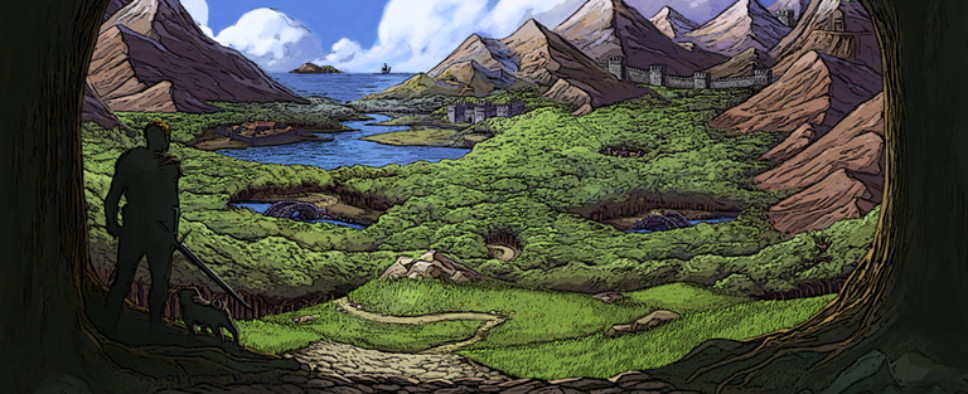Unknown Realm: The Siege Perilous Interview
-
Category: News ArchiveHits: 1288

The developers behind Unknown Realm: The Siege Perilous have mentioned in their recent Kickstarter update that they didn't have much time for PR and as such had only one interview planned for the near future. That interview is now up on GameRaven. Expect to read about the developers' design philosophies, peculiarities of developing for Commodore 64, crowdfunding platforms, and more. For example:
Sean: What’s the story behind how Unknown Realm’s concept was formed?
Bruce: The original concept for Unknown Realm came out of some frustrations I had with the direction RPGs were taking during the late 1980’s while I was still in high school. They started becoming focused on simulation aspects and less enjoyable to me. I wanted to do more exploring and discovering things, and less combat, simulation, and story grind. I always felt there was huge potential for this type of RPG to tell a story and keep the player’s imagination engaged at every step of the journey, but it requires the right balance otherwise, the game can quickly become a monotonous waste of the players time and intelligence.
Bruce: A big test for me as a game designer is whether the player actually finishes your game. Many players I know never finished RPGs they started because the games became too long, tedious, or generally less engaging. In my opinion, this is like an author writing a novel that is so boring or hard to read that the reader puts it down after a few chapters and doesn’t feel compelled to finish. A good RPG, like a good story, should be so engaging that the player cannot help but finish it because they are enjoying the experience at every step and can’t wait to see what happens next. Scope and pacing are very important for an RPG.
Bruce: A concept I formulated long ago is that games should be an abstraction of reality, not a simulation thereof. I think one game designer who understood this concept well was Sid Meier. His game Pirates! is just one example of what I consider great reality abstraction in a game and it influenced me greatly as a game designer. Better graphics and more realistic physics can never fix a bad game design.
Bruce: A lot the design choices that went into Unknown Realm came out of my D&D tabletop days in the 80’s. For instance, I dislike the idea that a role-playing game should have multiple players that you control. All the D&D players I knew only role-played with one character. This is why in Unknown Realm you only control yourself. Any companions in the game are computer-controlled. While I know many will disagree with me on this, I do not consider a game where you control multiple characters in a party to be a true RPG.
Bruce: I think of those games as more god-mode or strategy games, and less as true role-playing games. To me, it’s important that a player is 100% focused on role-playing only his or her own character in an RPG. Having to break character and jump from one role to the next is not immersive and quite schizophrenic in my book. I always try to avoid anything that breaks the immersion in my RPG designs. Even though I also learned many valuable concepts during my years working in the game industry, these core principles formed during the concept stage for Unknown Realm have stuck with me to this day.
Laura: Bruce has been talking about making an 8-bit RPG literally since our first date 14+ years ago. Several years ago, we made the choice to focus on this project full time. We took a pretty big risk on it to be honest, but the process of designing this game together has been really rewarding. The story of the game and the vision for the full release with the physical boxed editions has been a full creative collaboration between the two of us. It’s been really exciting to see it evolve over the last few years with roots firmly planted back in Bruce’s concept from the 80’s and both of us bringing our individual perspectives as gamers to the project.

